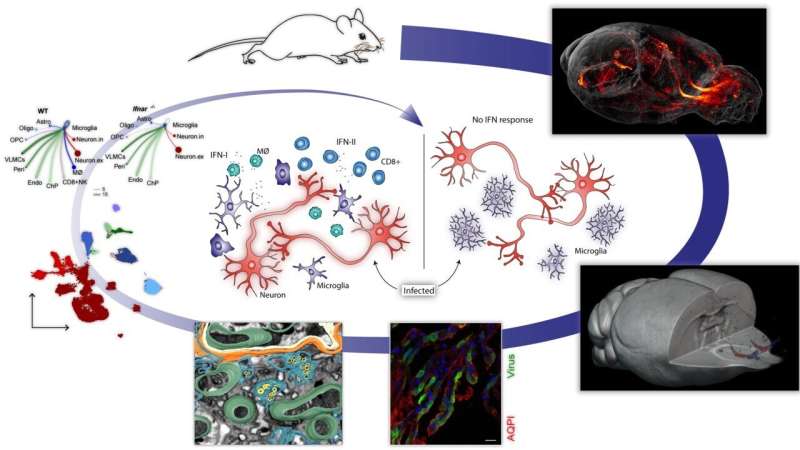This article has been reviewed according to Science X's editorial process and policies. Editors have highlighted the following attributes while ensuring the content's credibility:
fact-checked
peer-reviewed publication
trusted source
proofread
Different cell types in the brain are affected by tick infection, shows study

The dreaded tick-borne TBE virus infects different types of brain cells in different parts of the brain, depending on whether the sick person's immune system is activated or not. This is shown by a new study at Umeå University.
"This increased understanding of how the virus behaves in the brain and how it activates the immune system is a crucial step in the development of effective treatments and preventive measures against this difficult disease," says Anna Överby, professor at Umeå University and leader of the research group behind the current study.
Her group is affiliated with The molecular infection Medicine Sweden, MIMS, and Umeå center for Microbial research, UCMR.
What the Umeå researchers have mapped is how the TBE virus infects the brain to cause encephalitis. The researchers developed a method to three-dimensionally determine the location of viruses in the brain of mice and determine which specific parts of the brain have been infected with TBE virus. The method is based on information from image analyses that were combined with studies of gene expression in different cell types. The result can be seen as a virus "road map" in the brain.
It turned out that there was a big difference between the spread of the virus in the brains of mice with and without an innate immune response. The virus infected different regions of the brain depending on the innate immune system of the mouse. When the researchers zoomed in on the cells in the infected brain regions, they could see that the immune system not only affected how the virus spread, it also changed which cell types were infected in the affected regions of the brain.
When the researchers zoomed in further, they could see that in cases where the immune system in the brain could not be activated, the brain's immune cells, microglia, were infected. Their task is otherwise to help prevent and clear the infection. In mice that could activate their immune system in the brain, however, it was mainly nerve cells that were infected.
It is already known that the innate immune system plays an important role in preventing the TBE virus from damaging the brain, but it has been unclear where and which cells they infect.
"This is an important piece of the puzzle that is now being put in place. The results underline the importance of the immune system for those infected with TBE. We have also opened up new opportunities to study viruses that infect the brain with the new imaging methods we have developed and by combining them with gene expression analysis from individual cells," says Anna Överby.
Tick-borne encephalitis virus, TBEV, is not only a major problem in Sweden, especially in tick-dense areas such as the Stockholm archipelago and in the Mälardalen region, but also a big problem in central and eastern Europe. The virus can cause serious brain inflammation with long-term disabilities as a result. There is currently no curative treatment for TBE, but the most important measures are to prevent infection by avoiding tick bites and to get vaccinated.
The study is published in Nature Communications.
More information: Nunya Chotiwan et al, Type I interferon shapes brain distribution and tropism of tick-borne flavivirus, Nature Communications (2023). DOI: 10.1038/s41467-023-37698-0


















